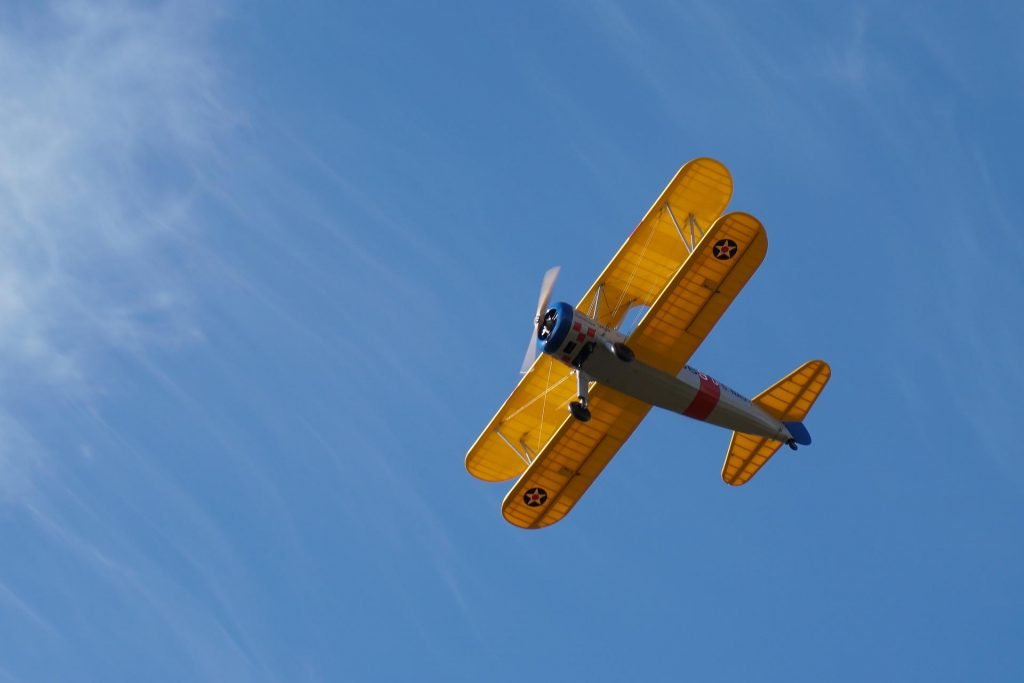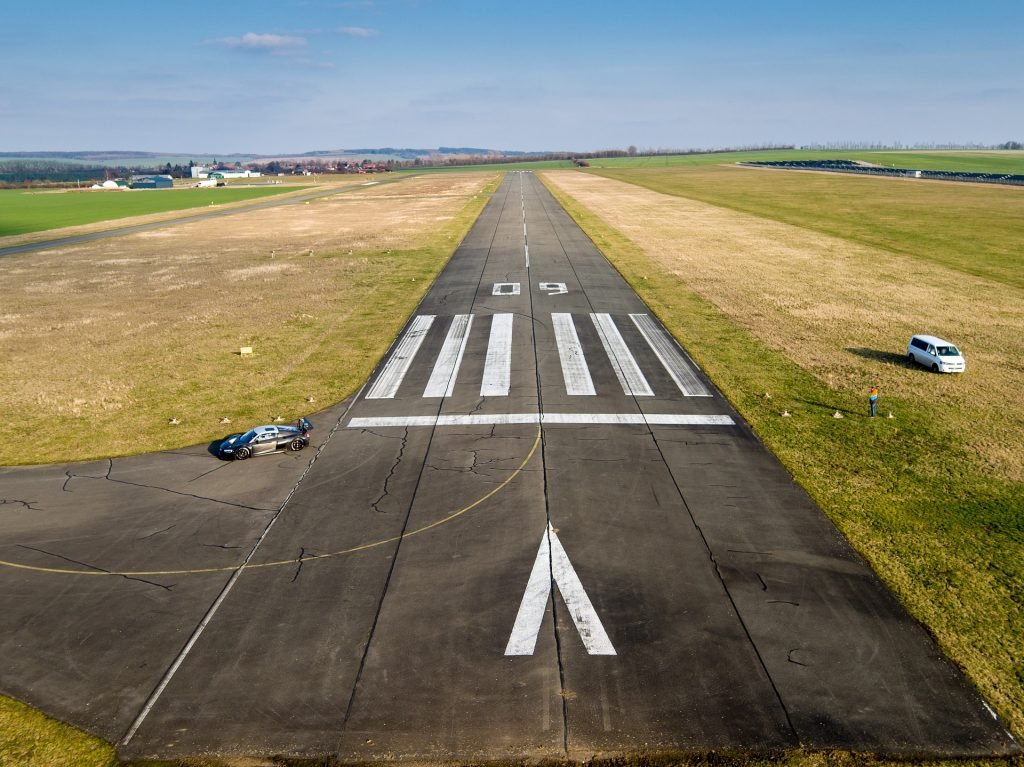Does the idea of making radio calls at uncontrolled airports intimidate you? It did to me when I first started flying. This simple guide will help you the next time you’re flying into an uncontrolled field.
When you fly into an uncontrolled airport, you’re sort of entering the Wild West. Sometimes the culture at uncontrolled airports is a bit different than controlled airports. Sometimes there are planes without radios. And here’s the kicker… it still gets very busy at uncontrolled airports at times. It can be very intimidating!
Let’s go over some basics of radio communication procedures at uncontrolled (non-towered) airports.
Table of Contents
DISCLAIMER: This article focuses on communications in the United States. You will see mention of FSS in this article, but according to FAA publications as of this writing (August, 2022) FSS advisories are only available in Alaska. Be sure to consult your publications for further details. This article is an educational guide only. This guide is no substitute for studying FAA educational material.

Image by Lynn Greyling from PixabayAre Radio Calls Required at Non-Towered Airports?
No. They aren’t. In fact, an aircraft is not required to have a radio to land at an uncontrolled airport. After all, a radio isn’t even a requirement for VFR flight.
What does this mean?
It means you need to be on your toes! Perhaps more than when landing at a towered airport. At least there we have the luxury of an air traffic controller telling us where the traffic is.
What are the Radio Procedures for Uncontrolled Airports?
Now, let’s discuss the 3 categories of uncontrolled airport communications. This includes selecting the correct radio frequency, choosing when to speak, and what to say when you speak.
Select the Correct Radio Frequency
The first step is to make sure you are communicating on the correct radio frequency. You can find the correct frequency in the appropriate aeronautical publication. This is most likely the Chart Supplement US (previously the Airport/Facility Directory).
The term for this frequency is the Common Traffic Advisory Frequency (CTAF). The CTAF frequency can be a UNICOM, MULTICOM, or FSS. It can also be a tower frequency at airports with a part-time tower.
Difference Between UNICOM and MULTICOM
UNICOM stands for universal communication. Air-to-ground communication facilities, such as small airports, use UNICOM stations for private communications. In the United States, UNICOM is usually the frequency of 122.8 MHz, but not always. Be sure to check your relevant aeronautical publication for each facility.
MULTICOM is for communication where a UNICOM station does not exist. It exists for all pilots to communicate with each other. In the U.S. this is usually the frequency of 122.9 MHz in the United States. Again, check the publications to be sure.
When & Where Should You Announce Your Position?
After tuning to the correct radio frequency, let’s talk about when you should make radio calls. The Aeronautical Information Manual (AIM) breaks this down into 3 categories. Inbound, outbound, and conducting practice instrument approaches.
Inbound Procedures
When you are inbound to an airport, you should make radio calls at the following positions.
- 10 miles out
- Entering downwind
- Entering base
- Entering final
- Leaving the runway
Before making any radio calls, be sure to monitor the frequency to get an idea of the current traffic situation at your destination. ALWAYS remember there may be traffic that is not announcing their positions or using a radio.
Outbound procedures
When departing a non-towered airport, you should make radio calls in the following positions.
- Before taxiing
- Before taxiing onto the runway for departure
The Aeronautical Information Manual (AIM) doesn’t suggest announcing your departure from the traffic pattern. Yet, I recommend doing it as a courtesy to any other traffic in the vicinity.
You could say “Robinson traffic, Cessna two-niner-eight, departing the pattern to the north, Robinson.”

Image by Claus Norgaard from PixabayPractice Instrument Approach procedures
Be sure to make radio calls at the following positions for practicing instrument approaches.
- Departing the final approach fix (using the name), or on the final approach segment inbound. (Use when there is no tower, FSS, or UNICOM).
- Approach is completed or terminated. (Use when there is no tower in operation or FSS).
Sample Radio Calls & Phraseology
We’ve discussed the importance of using the correct radio frequency, along with the positions, to make broadcasts. Now, let’s talk about what to actually say on the radio.
If There Is A UNICOM Radio Operator, Take Advantage
If you are flying into an uncontrolled airport that has a UNICOM operator communicating with pilots, take full advantage. You can use this to get valuable information, especially while inbound to an airport.
You can get information like weather conditions and wind speed/direction. Not to mention the recommended runway for landing and any other relevant advisories. Here is an example radio call when approaching an airport
“Robinson UNICOM, Cessna 2457X is 10 miles to the northeast for full-stop landing at Robinson, requesting airport advisories.”
Be sure to adhere to the classic rule of thumb for radio communication in aviation.
- Who you are
- Where you are
- What you are going to do
In this case, the ground operator may respond with valuable information mentioned above.

Image by Alexander spiderman from PixabayHow to Self-Announce Your Position and Intentions
Self-announcing your position takes a little bit of practice, but it’s no big deal when you get the hang of it. Here is one difference between self-announcing vs ATC communications.
Start and End Each Transmission With the Airport Name
Quite often, the first part of our radio transmissions go unheard. Sometimes other airmen do not hear the airport name. It is best practice for pilots to mention the airport name in the beginning and the end of the transmission. This is different from towered airport communications. At controlled airports, we end every transmission with our aircraft callsign.
In the absence of an FSS, you should “self-announce” your position and intentions. Here is a sample radio call when entering the traffic pattern to land.
“Sullivan traffic, Cessna 94476 is entering left downwind, runway 18, touch-and-go, Sullivan.”
Here’s another for departing.
“Sullivan traffic, Cessna 94476 is taxiing onto runway 36, departing the pattern to the east, climbing to 5000, Sullivan.”
And another for practice approaches.
“Sky King traffic, Piper 2KR, 4 miles to the east, inbound, descending through 3000, practice VOR alpha approach runway 26, Sky King.”
Words of Caution: Don’t Skip This Section
Let’s talk safety. Imagine this scenario.
You hop over to your favorite uncontrolled field to practice some touch and goes. You’re a few miles out, so you tune into the CTAF and start to listen.
You hear nothing. You even have a good look out the window and nobody is in sight. So you tell yourself, “I’m good to go, there’e nobody here, let’s practice.” Then you start practicing landings.
You even start dancing around the airport a little, landing on different runways. You’re so impressed with your landings, you become oblivious to potential inbound traffic.
Then another hotshot like you comes along and has the exact same thing in mind. He hears nothing and happens to not see you. So he starts doing the same thing.
This is a recipe for disaster.
Radio Is No Substitute for Staying Alert
Always maintain a good visual scan. Excellent situational awareness is a MUST when arriving or leaving an uncontrolled airport. It doesn’t matter how many times you hear other pilots on the radio announcing positions. It doesn’t matter how many times you have announced your position.
Keep your eyes peeled and be alert! Don’t keep your eyes inside that cockpit any more than necessary.
Have a Plan Before Arriving or Departing
Rehearse what you’re going to say and when you’re going to say it before the situation arises. For example, practice your radio calls in your mind before making them out loud.
Have a plan for how you’ll be arriving or departing the traffic pattern before the time of. Walk through the steps in your mind beforehand.
Know Where The Other Aircraft Are
This a no-brainer isn’t it? Always know where the other aircraft are. Be aware of aircraft moving in the opposite direction you will be traveling.
Conclusion
I hope this article gave you a bit of a better idea of how to make radio calls at uncontrolled airports. It can be intimidating at times. Especially when you tune in to CTAF and hear non-stop radio calls.
Be sure to practice your non-towered airport communication frequently. Even if you’re just driving down the road in your car by yourself. Imagine yourself in the plane and make those calls.
What are your thoughts? What tips do you have for uncontrolled airport communication?
Image by Thomas Ehrhardt from Pixabay



This is scary! In todays world with ultralights, powered parasails and drones running loose, FAA should require a radio. Small radios are inexpensive – all users should have one before approaching and un-controlled landing strip.
I understand that. When I was training I remember hearing other students say that learning to fly at a controlled airport was intimidating, having to talk to ATC. I personally found it reassuring knowing I had other eyes in the sky around the airport besides myself. Learning to talk on the radio didn’t seem as intimidating to me as not knowing who or what was in the airspace around the field.